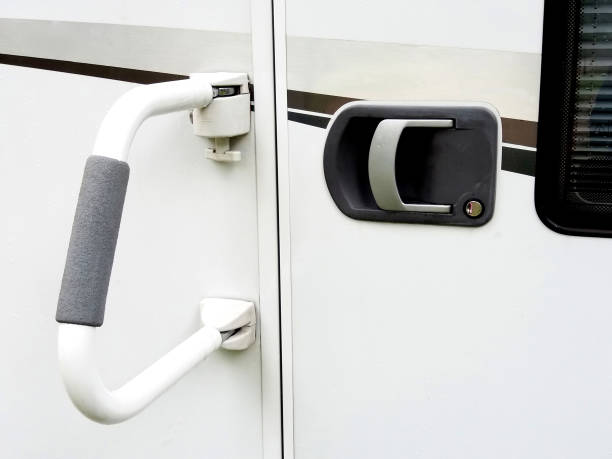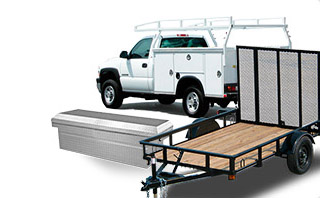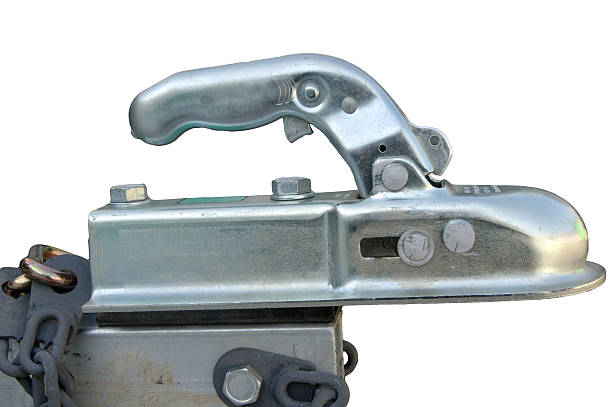RV Door Holders Replacement Guide: Safety & Longevity

RV Door Holders Replacement Guide: Safety & Longevity
Owning an RV is an invitation to adventure, but it also comes with the responsibility of maintenance to ensure a seamless experience on the road. Among the myriad of components that require attention, RV door holders and sockets are often overlooked. These small yet vital parts play a crucial role in securing your RV doors, whether you're parked or on the move. Over time, like any mechanical component, they can suffer from wear and tear, leading to potential issues that could disrupt your journey. Knowing when to replace them is key to avoiding inconvenience and preventing potential damage to your RV.
Difficulty in Securing Doors
One of the earliest indicators that your RV door holders and sockets might require replacement is difficulty in securing the doors. If your doors don't latch securely or frequently come loose, it’s a sign that these components are likely wearing out. Loose doors pose a significant safety hazard, especially during travel, as they could unexpectedly swing open, risking injury to passengers and damage to the RV.
Moreover, a door that doesn't stay shut can lead to other issues, such as letting in drafts, water, or pests. This can compromise the comfort of your living space and potentially lead to higher energy costs if you're using heating or cooling systems. Ensuring your doors close securely not only adds to safety but also maintains the integrity of your RV environment.
Visible Wear and Tear
Regularly inspecting your RV door holders and sockets for visible signs of wear and tear is a proactive measure to avoid future problems. Look closely for cracks, bends, or any deformations that might compromise their ability to function effectively. Constant exposure to the elements, combined with the repetitive action of opening and closing doors, can accelerate deterioration, making replacement a necessity.
Additionally, environmental factors such as salt from coastal areas or grit from dusty roads can exacerbate wear and tear. By recognizing these signs early, you can replace these components before they lead to more extensive and costly repairs. Staying ahead of visible wear ensures your RV remains in top condition for all your travels.
Unusual Noises
Unusual noises, such as creaking or snapping when opening or closing RV doors, can be an auditory clue that your door holders or sockets are worn. These sounds often indicate that the components are not operating smoothly and may be on the brink of failure. Ignoring these noises could result in sudden component failure, leading to more significant issues on the road.
In addition to being a precursor to mechanical failure, these noises can detract from the overall enjoyment of your RV experience. A peaceful journey is often interrupted by the rattling or creaking of failing parts. By addressing these auditory signals promptly, you ensure a smoother, quieter ride.
Testing the Durability of Your Door Holders and Sockets
by Ben Duke (https://unsplash.com/@bdphotography)
Check for Rust and Corrosion
Rust and corrosion are common adversaries of metal components, particularly in RVs that are frequently exposed to a variety of weather conditions. Carefully examine your door holders and sockets for any signs of rust. Even minor rust can indicate weakening parts that require replacement to maintain door security and functionality.
Moreover, corrosion can spread quickly if left unchecked, affecting other parts of your RV's structure. Regular inspections and timely replacements not only maintain the functionality of your doors but also protect the overall structural integrity of your RV. By addressing rust early, you prevent a minor issue from escalating into a more extensive problem.
Perform a Manual Test
Conducting a manual test of your door holders and sockets is a straightforward way to gauge their condition. Gently move the door back and forth while observing the holders and sockets. If you notice excessive movement or instability, it’s a clear sign that these components are no longer able to hold the door securely and should be replaced.
This manual test also provides an opportunity to check for any misalignments or looseness in the door assembly. Ensuring that all parts are functioning harmoniously is crucial for maintaining door security. Regular testing not only helps identify components in need of replacement but also aids in maintaining the overall health of your door systems.
Evaluate the Material Condition
Materials such as plastic or rubber used in RV door holders and sockets can become brittle over time, especially after prolonged exposure to harsh weather conditions. Inspect these materials for any signs of brittleness or discoloration, both of which are indicators that it may be time for a replacement.
Brittle materials are more susceptible to cracking and breaking under stress, which can compromise the security of your doors. By replacing these parts before they fail, you can avoid the inconvenience of a door malfunction while on the road. Keeping a close eye on material condition ensures that your RV remains reliable and safe.
How to Replace RV Door Holders and Sockets
Gather the Necessary Tools
Preparation is key when it comes to replacing RV door holders and sockets. Before starting, gather all necessary tools such as a screwdriver, drill, and the appropriate replacement parts. Having everything readily available will streamline the process, making it more efficient and less stressful.
In addition to basic tools, consider having a lubricant on hand to ensure smooth operation of the new components. This proactive measure can enhance the longevity of your new parts and improve their functionality. Proper preparation ensures a smooth transition to new door holders and sockets.
Remove the Old Components
Begin the replacement process by carefully removing the old door holders and sockets. Use a screwdriver to unscrew them from the RV door and frame, taking care not to damage the surrounding areas. Removing old components gently preserves the integrity of your RV's structure and prepares it for new installations.
During removal, take note of any additional issues such as rust on adjacent parts or misaligned screws, as these may need addressing to ensure a secure fit for new components. By thoroughly inspecting and preparing the area, you set the stage for a successful installation.
Install the New Holders and Sockets
Once the old components are removed, align the new door holders and sockets with the existing holes and secure them using screws. Ensure that they are firmly in place to maintain the security of the door. A proper installation will prevent future issues and ensure that the doors operate as intended.
Consider using a level to ensure that the new holders and sockets are perfectly aligned, which is crucial for optimal door function. Proper alignment not only ensures security but also enhances the ease of use and longevity of the components.
Test the New Installation
After installing the new door holders and sockets, perform a thorough test by opening and closing the door several times. This step ensures that the door is held securely and operates smoothly without any unusual noises. Testing the new installation helps confirm that the components are functioning correctly.
Additionally, listen for any signs of friction or difficulty in movement, as these could indicate a need for adjustment. By thoroughly testing the new installation, you can confidently rely on the security and functionality of your RV doors.
Benefits of Replacing RV Door Holders and Sockets
by Frank Weichelt (https://unsplash.com/@frankweichelt)
Enhanced Safety
Replacing worn-out door holders and sockets significantly enhances the safety of your RV. Secure doors not only prevent accidents but also ensure that your belongings remain safe during travel. A well-secured door is less likely to cause injury or damage in the event of sudden stops or sharp turns.
Enhanced safety contributes to peace of mind, allowing you to focus on the journey rather than worrying about potential mechanical failures. By prioritizing safety, you protect both your investment and your travel experience.
Improved Aesthetic Appeal
New door holders and sockets can greatly improve the overall aesthetic appeal of your RV. Fresh, functional components contribute to a polished look that enhances the RV's value and appeal. This upgrade is particularly beneficial if you plan to sell or trade in your RV in the future.
Moreover, improved aesthetics can enhance your personal enjoyment of the RV. A well-maintained and visually appealing RV reflects pride in ownership and can make your travels more enjoyable.
Increased Longevity
Regular maintenance and timely replacement of parts like door holders and sockets contribute to the overall longevity of your RV. By addressing small issues promptly, you can prevent more significant problems from arising in the future. Longevity is a key factor in maximizing the return on your investment in an RV.
In addition to preserving the lifespan of your RV, maintaining these components ensures that your travel experiences remain uninterrupted. By committing to regular upkeep, you ensure that your RV is always ready for the next adventure.
Conclusion
Maintaining your RV involves paying attention to minor components like door holders and sockets, which play a crucial role in overall functionality. Regular inspections and timely replacements can prevent inconveniences and ensure a safe, enjoyable travel experience. By following the steps outlined in this guide, you can identify when these parts need replacement and efficiently handle the process. Keep your RV doors secure and your journeys worry-free by prioritizing the maintenance of these essential components. Investing time in these small details not only preserves the value of your RV but also enhances your enjoyment of the open road.






